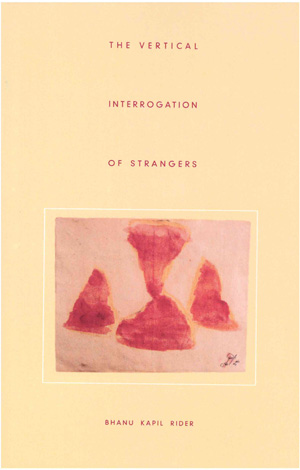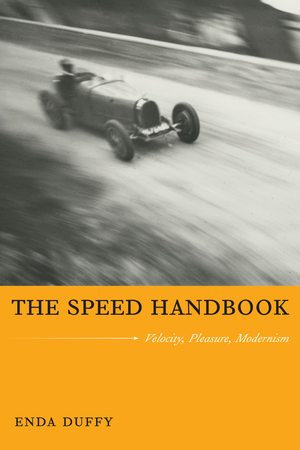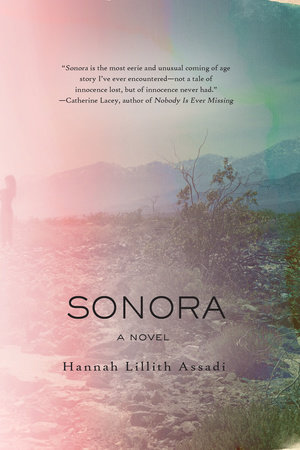Reading Lists
7 Books for People Who Like Speed
Megan Fernandes recommends disorienting literature that changes time and space

I’m an asthmatic who loves speed. By that, I mean adrenaline. I also mean that my emotional life operates in short circuits. I have a quick fuse. I fall in love hard and multiple times a day with strangers in bodegas, sick trees trying their best, old couples at hotel bars who still engage with the weather of each other. By speed, I also mean mobility, instant gratification, impulsivity, all those things you might read ironically in a self-help book about “sensation-seeking” in your twenties and then less ironically in your thirties when you sign up for a “recovery” course with British comedian, Russell Brand. Please, no judgment.
By speed, I also mean by how fast things can escalate in our geopolitical climate and the danger of nationalist “might.” The speed with which we can destroy each other. The speed with which we accuse each other, cancel each other, cage each other. The speed of reactiveness is also one of the markers of our communication and it can be hot. Quick, flirty banter with a friend is pleasurable. On the other hand, the speed of our reactiveness is also the worst part of the internet. In one of my poems, “No Black. No Asian. No Femme,” a trans friend of mine shows me how quickly the internet (Grindr) can dehumanize you: six words. The bite is fast. The mark, long.
So, yeah, speed can be uncritical. For those who identify as women, non-binary, LGBTQ, and people of color, speed can also be a radical act of self-assertion since many, if not most of those who identify within those demographics, know that assessing our environments in “cool” and collected ways is crucial to our survival. I grew up knowing, for example, how not to wound masculinity in situations where I felt my body in a space of potential threat. We all know that wounded masculinity and white fragility are the ultimate catalysts for violence. We also know that the process of assessing such threats, with slow and logical temporality (how far am I from a door, are there others around to help me, I will slowly put my hands on my head, officer), is counter to the privilege of engaging with life fast and uncritically.
There is no such way of possessing uncritical speed for the populations I mentioned above, and so, when I wrote my book, Good Boys, about nuclear anxiety, interpersonal carelessness, bureaucratic and physical violence, I also wrote very purposefully with adrenaline. I wrote with speed, breathlessness, syntactical brokenness. I love an enjambed line. I love the unfinished, the messy, the abandoned. I love syntactical fury. It felt radically freeing.
And, of course, by speed, I also mean all those things I find stimulating and joyous. I like to chase the night. My heart beats too fast. I don’t sleep but when I do, I sleep like the dead. I like the substances that both lobotomize and enhance speed. I love its wild spontaneity, the way planes and trains compress time, the bizarre dreams I have when jet-lagged. In short, speed changes time and space and disorients us. Sometimes this disorientation can be welcoming (the rush of adrenaline, overwhelming joy, the privilege of mobility), and other times it can be restless, emotionally intense, and protective. Whatever you interpret it as, it’s a high that I have found differently explored in the following books.
Killing Rage: Ending Racism by bell hooks
“I am writing this essay sitting next to an anonymous white male that I long to murder.” So starts one of the essays in the collection killing rage: ending racism by bell hooks. hooks gives a heartbreaking account of her interaction with a white man who, along with a flight attendant, has humiliated her black female friend in the first-class cabin of an airplane. hooks is quick to a rage which has been building after a day of nauseating racial harassment. She has a fantasy of slicing the man slowly with a knife. She becomes unrecognizable to herself in that moment. How does one become capable of these thoughts? How could such thoughts give one, who is otherwise sensitive, empathetic, such pleasure?
hooks grew up in the apartheid South and so she knows that “To express rage in that context was suicidal. Every black person knew it.” But she also talks about how rage is an important part of the resistance struggle, quoting Morrison:
“In Morrison’s first novel, The Bluest Eye, her narrator says of the dehumanized colonized little black girl Pecola that there would be hope for her if only she could express her rage, telling readers ‘anger is better, there is a presence in anger.’ Perhaps then it is that ‘presence,’ the assertion of subjectivity colonizers do not want to see, that surfaces when the colonized express rage.”
hooks explains that a critical rage teaches us that we are human beings with cognitive and emotional limits. A quickness to rage demonstrates a politics of humanness, a way of immediately being witness to how the most vulnerable subjects who are continually robbed of not just their humanity (that abstract and often politicized term), but also, their ability to sit in a classroom, cross a street, walk home innocently eating skittles.
The Collected Poems of Frank O’Hara
Maybe this is the obvious choice on this list, but I don’t care. O’Hara is my spirit poet and he converses with me in the night and is always whispering just stay out one more hour. O’Hara’s New York is the one I conjure even as it slips away into its current (and often disappointingly bro-y and fascist) corporatization. I never tire of his lines and restlessness and joy. I never tire of summoning his voice as I zip across the bridge late at night between Manhattan and Brooklyn. I love the way he turns celebrities into Madonnas. I love that he treats the sacred with irreverence and the irrelevant as sacred. Most of all, I love his speed. The speed of his lines, his observations, the way he makes visions appear with such fast associations that the reader actually feels the “high” of his imagination. And of course, I love that Robert Lowell threw shade at him at a reading they gave together at the College of Staten Island in 1962 when he sneered at O’Hara’s work and said, “I’m sorry I didn’t write the poem on the way over here,” implying that O’Hara’s creative process was too quick and therefore, trivial. Sorry, but most of us still would rather read Frank on our deathbeds.
A Literate Passion: Letters of Anaïs Nin and Henry Miller, 1932-1953
I’m addicted to the banter between Miller and Nin. I love their heady analysis of Lawrence, their self-mythologizing, the way their excitement about something they’ve been reading rips across the page. They are the ultimate nerds. But even though the relationship is presented in this epistolary way, usually counter to speediness and reactivity, these two have a way of slinging insults and accusations and confessions of love that feel like they are happening in “real time.”
One of my favorites is a letter Nin sends to Miller because she is pissed at him because he came over and ignored her or dismissed her when she was trying to confide in him. She wrote a searing paragraph of a letter stating: “I made all the excuses for you. I never expected you to be human for a whole lifetime, even seven days a week.” She calls him selfish and shocking and says she doesn’t want to have anything to do with him. Miller writes back a seven-page letter chiding her for her reaction: “Do you believe all that nonsense you write?… Bah! If I thought you really felt that way about me I’d never see you again… never. Because that’s a degradation to all that exists between us.” Emotionally manipulative and seemingly cool-headed, he then writes about spring and love and his bicycle and yet, all the while, he writes with the fury of a panicked and sorry man. The speed of his prose betrays his actual guilt. He says: “You’re not going to tell me, are you really, that however it was I failed you yesterday, it’s the end, that I killed it? I should imagine that I ought to be able to fail you still more miserably, and yet not let it be the end. On Tuesday I may prove a failure. And on Thursday or Friday I may prove magnificent. People have calendars too. Or are calendars.” People are calendars? I love that.
Nature Poem by Tommy Pico
“Nothing can fall that wasn’t built” writes Teebs, the queer American Indian (NDN) speaker of Nature Poem. Pico is a master of leaping from subject to subject. Indeed, he reinvents the poetic epiphany here through language that appears conversational and text-like, but actually has many traits of aphoristic writing. He drops truth real casual: “It’s hard for me to imagine curiosity as anything more than a pretext/for colonialism.” And if you enjoy, as I do, being overwhelmed by truths that feel like they can fall anywhere, on any subject, with a kind of tender matter-of-factness, then this book is for you. Pico writes a nature poem that is against the stereotypical meditative, rational, objective temporality of white, colonized interiority. (Think of the dude on your Norton Romantic poetry textbook who looks over a vista and gazes unto the sublime of Nature). Instead, things happen fast. He wants to slap a tree. He rejects a thesis of planetary exoskeletons. Slow time is a luxury for those who aren’t being killed for their land and their resources. Pico really gets something about “ruins” in this book. How does the speed of modernity and consumption and online love re-make us? What does contemporary ruin look like? Just look around.
The Vertical Interrogation of Strangers by Bhanu Kapil
Who is responsible for the suffering of your mother? When was the last time you lied and were you protecting yourself or someone else? These are just a few of the questions Kapil asks a variety of strangers in India, England, and the United States before making up a collage of poetic vignettes from the answers she received. Particularly, Kapil looks at the experience of Indian women living in the diaspora for whom a sense of place and belonging is constantly in flux. Kapil, therefore, reverses a long-time idea about diaspora (meaning “scattered”) as that which is slow, taking place over many generations and including many migratory patterns. Through her formal inventiveness, the reader experiences diaspora all at once with a fast simultaneity of voices. The speaker(s) tend to let go of what they cannot know. They, dispossessed, let go of the earth and all her rules of light and gravity: “When she is grown, she realizes that she has forgotten everything. How to live without explanations. How to travel light. How to let the earth go. How skin can see.”
The Speed Handbook: Velocity, Pleasure, Modernism by Enda Duffy
Duffy was one of my professors in graduate school at the University of California, Santa Barbara and his imaginative lectures were something of legend. His book investigates the politics and aesthetics of speed, particularly asserting speed as a new pleasure of modernity by analyzing, among other technologies of movement, the motor-car. For Duffy, speed is not only about acceleration, but also alertness, sensory excitement, and the new fantasy structure of Western conquest:
“Speed, as the achievement of the technologies of Western modernity, was offered as a personal sensation to individuals as a means to experience space in a new way, at the very moment when there was no more new world space left to organize.”
The coolest part of the book is how Duffy thinks about sensations related to speed: thrill, bewilderment, awe. By linking emotionality to the technological, Duffy asks us to consider the ways we live as modern adrenaline junkies (face it, we like our hearts to race). If you’re wary of academic prose (and sure, there are some Marxist dips), fear not. The book is exquisitely written and the subject material, captivating.
Sonora by Hannah Lillith Assadi
This book is hands down the best novel I’ve read in the past five years. It is a poet’s novel with time layering upon itself and mythologies and outer-space weaving into the “real world.” The book follows the intense bond between two young women who move from the Sonoran Desert to New York City. They take too many drugs and go to too many parties and hang out with questionable, fucked up men. But what is brilliant about the book is that the speed of their lifestyle is countered with a slow haunting so on one hand, the novel propels the characters towards doom and on the other hand, the characters sort of get to exist outside of time and therefore, outside of mortality. Basically, this book is smart about speed and stimulants. It doesn’t make the mistake of stupidly glamorizing those who use drugs as self-indulgent party kids. Instead, drugs are imagined as ways to enhance visions that are already part of the occupied land in which girls live. It’s not “speed as escape” from an Arizonian suburb. It is speed (blow) as that which extends the feeling of the ecstatic, that which keeps the fever-dream going just a bit longer, that which communes with the spectral haunting of maimed civilizations coming back to life and echoes of colonial violence from their ancestral homelands.
















